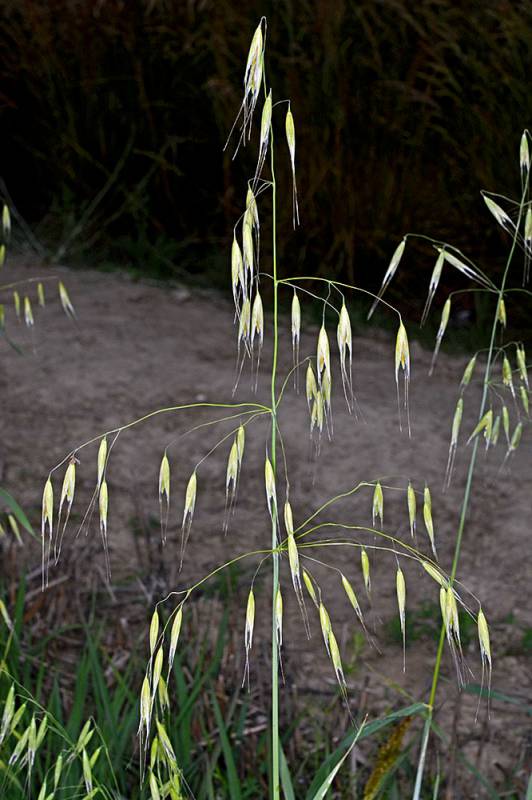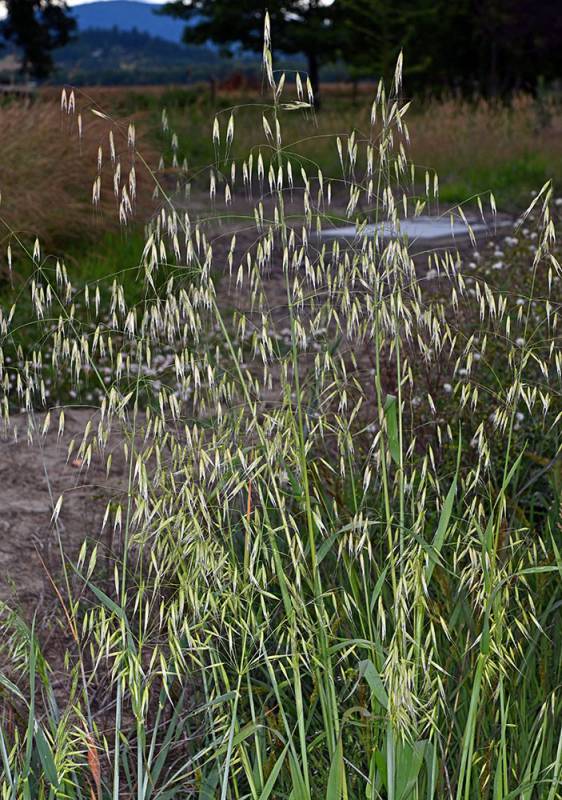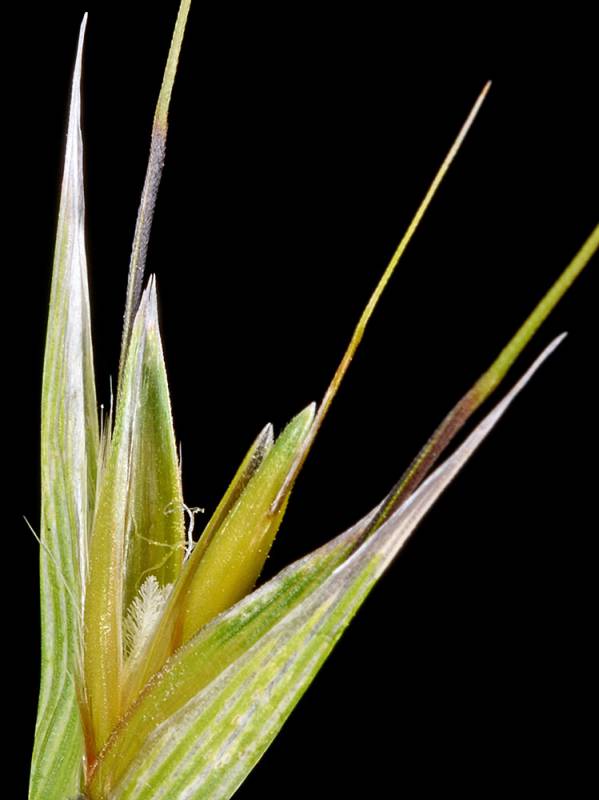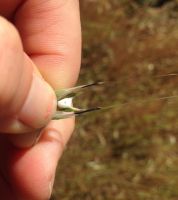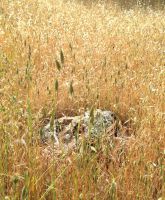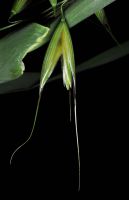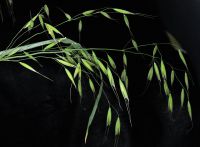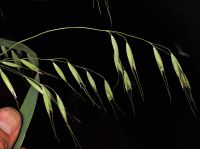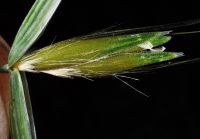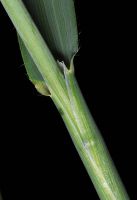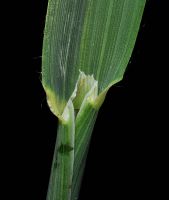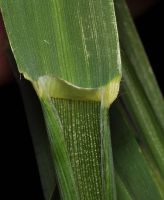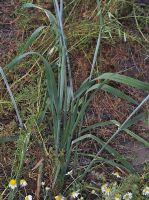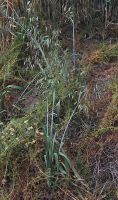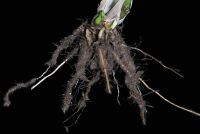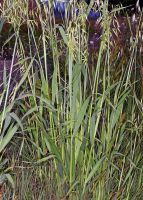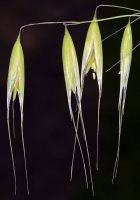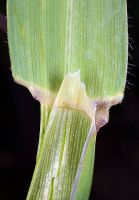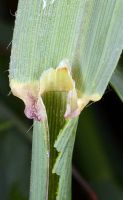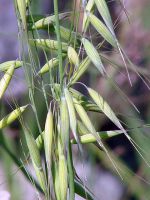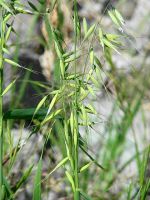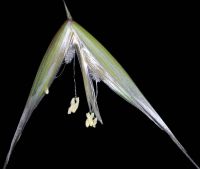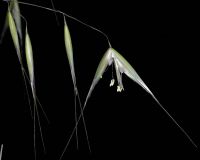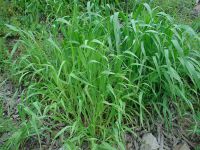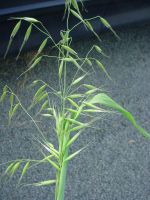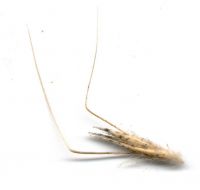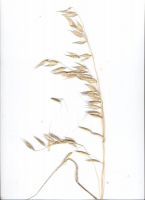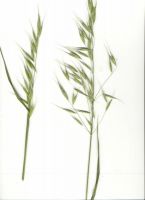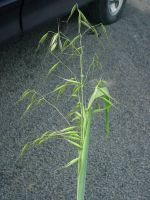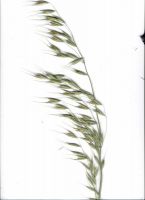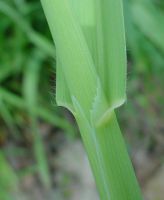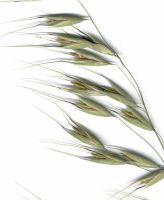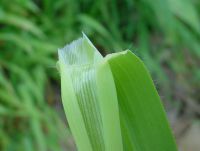Distribution: Occurring on both sides of the Cascades crest in Washington; Alaska to California, east across North America to the Atlantic Coast.
Habitat: Fields, roadsides, wastelots, and other disturbed areas.
Flowers: May-September
Origin: Introduced from Eurasia
Growth Duration: Annual
Conservation Status: Not of concern
Pollination: Wind
Annuals, the culms to 1 m. tall, hollow.
Sheaths open; ligules 3-6 mm. long, obtuse to acute, puberulent; blades 3-10 mm. broad, scabrous, often with a few long hairs.
Inflorescence a large, open panicle, the spikelets pendulous; spikelets usually 3-flowered, the rachilla readily disarticulating between the florets, strongly bearded; glumes membranous, the first 7-nerved, the second 9-nerved; lemmas densely bearded on the callus, the upper portion greenish, but the tip membranous and acutely bilobed for 1 mm.; first 2 florets with twisted, strongly-bent awns up to 4 cm. long; lodicules 2 mm. long.
Utricle
Publication: Sp. Pl. 1: 80. 1753.
Avena fatua L. var. vilis (Wallr.) Hausskn.
PNW Herbaria: Specimen records of Avena fatua in the Consortium of Pacific Northwest Herbaria database
WA Flora Checklist: Avena fatua checklist entry
OregonFlora: Avena fatua information
E-Flora BC: Avena fatua atlas page
CalPhotos: Avena fatua photos

